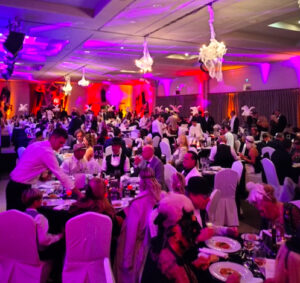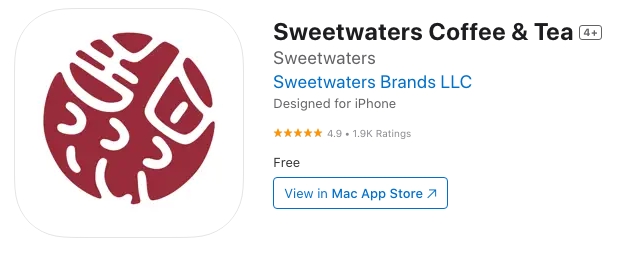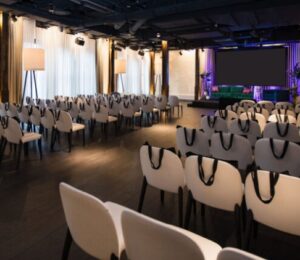
The Evolving Landscape of B2B Events Management: Adapting to a Flexible Workforce
In recent years, the catering and restaurant industries have undergone significant transformations, not just in menus but in the way they cater to corporate and private events.
Logistics and Evolving menus to personalised goodie bags, restaurants and caterers are adapting meeting planners for a more flexible and dispersed workforce. As the workforce embraces hybrid and remote working models, event management must accommodate these changes. Here’s a look at how the industry is adjusting, particularly in the B2B space, and how event planning has changed in response to these shifts.
Catering: The Vital Component of the Dining Experience
Catering has long been an essential service for restaurants looking to supplement in-house dining. However, the rise of remote work and the reduction in traditional office hours have forced both large restaurant chains and small independent establishments to rethink their approach to event management.
 In particular, corporate events like year-end celebrations, team-building events, and product launches are driving a significant shift toward more flexible and casual event formats.
In particular, corporate events like year-end celebrations, team-building events, and product launches are driving a significant shift toward more flexible and casual event formats.
For example, Samantha Henry, a partner at Chicago’s Lettuce Entertain You restaurant group, notes a shift from traditional multi-course seated dinners to more informal “movement” events, such as strolling receptions, cocktail parties, and live music with dancing.
Matinee Events: Starting earlier to accommodate the shift in commuting patterns.
With the ongoing trend of fewer people attending office-based work daily, catering services have had to adjust to more intimate gatherings, often with fewer attendees.
This shift in event formats requires new strategies in catering, such as the focus on smaller, customisable orders, and creative event solutions that appeal to a mobile workforce.
The Impact of Hybrid Work on Catering Models
Companies continue to embrace hybrid working models and the demand for flexible, individually tailored catering options has surged.
Demand is for more personalised events, many of which include food stations, cocktail bars, and bespoke menus designed to reflect a company’s culture or values. This shift is an essential aspect of the B2B catering landscape, where catering has moved beyond just serving food to becoming an integral part of the brand experience.
Caterers have adapted by offering more diverse and customizable menu options, including individually packaged meals, drink stations, and interactive food experiences that align with the brand identity of the companies they serve. 
For example, a company focused on sustainability might choose compostable plates or offer a menu featuring locally sourced ingredients. Additionally, as corporate events tend to be more spread out throughout the day, food delivery times are becoming increasingly flexible, catering to attendees who may be arriving at different times based on their work schedules.
The Rise of Goodie Bags and Gifting Trends in Corporate Events
Notable Mention: Changes in the catering sector focus on gifting and personalised experiences. Companies are now offering employees personalised goodie bags that provide a memorable takeaway to enhance the overall event experience.
Creating entire event packages, complete with thoughtful details like branded tote bags, bottles of Champagne, and small gifts.
Samantha Henry’s catering group has incorporated brunch sets with cinnamon rolls and Champagne splits, or breakfast boxes with charcuterie, for attendees to enjoy after the event. This gifting trend has become an important way to create lasting memories while enhancing brand visibility.
Featuring company logos or branded items, the goodie bag is an additional marketing opportunity for businesses.
The Evolving Role of Technology in Catering and Events
As restaurants and caterers adjust to new trends in corporate dining, technology is playing an increasing role in facilitating these changes. From mobile apps to online ordering platforms, catering services are leveraging technology to make the ordering and planning process more efficient and user-friendly.
Sweetwaters Coffee & Tea, a chain based in Ann Arbor, Michigan, enhanced its catering service by building a mobile app that allowed customers to easily place catering orders. This added convenience has become crucial, especially as employees continue to work remotely.

Track and predict: Catering trends, analysing customer data and preferences, caterers can offer more personalised menus, forecast demand, and ensure they have the right inventory to meet evolving needs. This tech-driven approach is not only improving customer satisfaction but is also helping caterers optimize their operations and reduce waste.
The Growth of B2B Catering for Events and Corporate Management
As more businesses embrace flexible work schedules, catering services are increasingly catering to B2B events, which range from team-building retreats to client meetings and large-scale corporate conferences. According to IBISWorld, the U.S. catering industry generated $14.8 billion in revenue in 2023, with an increase in sales driven by rebounding gatherings post-pandemic. However, the market is facing competition and rising costs, prompting caterers to diversify their offerings to stay ahead.
Corporate events have grown in complexity, with businesses placing a greater emphasis on unique experiences and branding. Event organizers are now more involved in the planning process, working closely with caterers to curate menus that align with the company’s identity and the message they wish to convey at their events. This trend has led to the rise of more unique offerings, from gourmet food trucks to interactive stations where attendees can create their own dishes.
Event Scheduling: Early Bookings Corporate Preferences

Breakfast Martini: Another shift in the catering industry has been the timing of corporate events. Historically, corporate holiday parties took place in December. However, as companies adjust to new schedules, many are now opting for earlier events, with some even scheduling their parties before Thanksgiving to ensure maximum attendance. In cities like Chicago, where corporate culture has shifted towards flexibility, the most popular dates for holiday parties are now in the earlier part of December.
Catering venues have also had to adapt to this new scheduling demand, with many restaurants and event spaces requiring companies to book their venues well in advance to secure coveted dates.
Looking at Future Catering in a Hybrid Work World
As the workforce continues to evolve, so too does the catering industry. From smaller, personalized gatherings to the rise of gifting trends and the integration of technology, restaurants and caterers are responding to the needs of a more flexible, dispersed workforce. Whether through customized menus, branded goodie bags, or tech-enabled services, the catering industry is leveraging innovation to stay ahead in an increasingly competitive B2B landscape.
For more insights into how the catering industry is adapting to the changing demands of corporate events and B2B services, you can explore the following resources:
- IBISWorld Catering Industry Report
- How Catering Services Are Shaping Corporate Events
- Event Planning Trends and Catering Innovations
The future of work continues to evolve, as do the strategies that caterers and event planners use to create engaging, memorable experiences for both companies and their employees.






